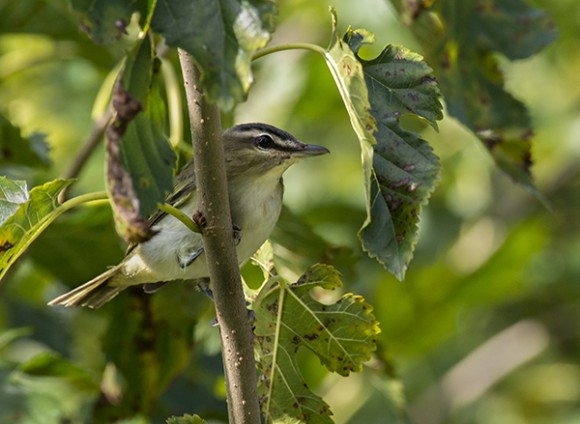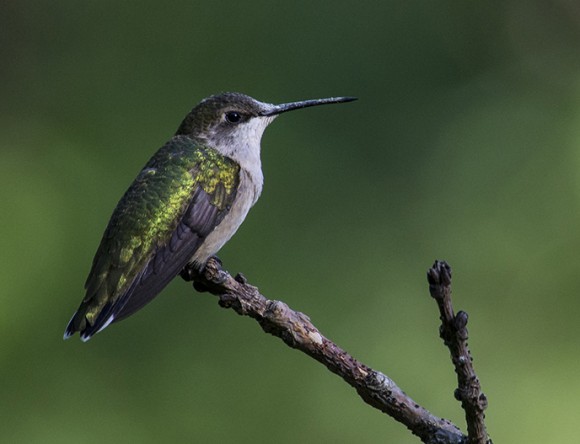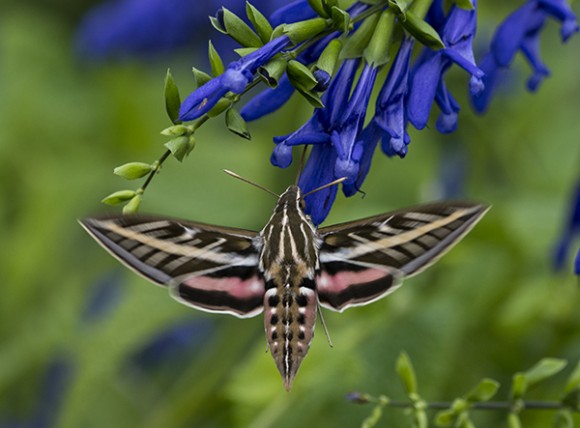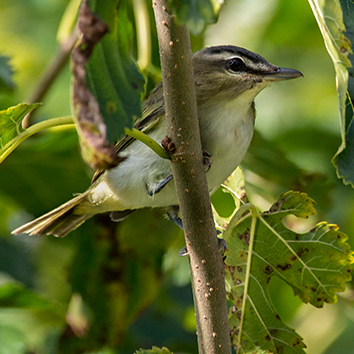Twice a year we are blessed with the migration of birds, butterflies, moths, and dragonflies. Many species that we don’t normally see (or don’t see in large numbers) are now moving through the Chicago area. Each day is a mystery as to what I might come across.

©Carol Freeman
Today I chose to head over to McDonald Woods. Before I could even get to the path, I was greeted by red-eyed vireos. I stayed there and watched them for some time. One thing I have learned is to photograph birds wherever I see them, and to avoid the impulse to assume I’ll find more birds, or better birds, elsewhere. Just because the birds are hopping here doesn’t mean they will be hopping everywhere: best to take advantage of the birds wherever they are, even if it’s just the parking lot.
Only when the activity slowed did I head into the woods to see what else might be there. Right away, I saw some movement up high. Yep, warblers. I could tell by the flash of the tail feathers that these were redstarts. My instinct is to try to focus on any bird that moves. However, another thing I have learned is to resist the urge to photograph birds up high and backlit. The best photos are taken at eye-level. I look for movement and listen for bird calls to help me find a likely place to get some good photos. When I do, I relax and wait. Yes, wait. It might take 15 or 20 minutes for the birds to filter down. It is tempting to try to find the birds, or to follow them, but all that tends to do is send the birds higher up.

©Carol Freeman
After just a few minutes, I see a young warbler hopping in the lower branches. I get a few shots before it takes off. Then, in zooms a hummingbird. The nice thing about hummingbirds is that they will often come back to the same perch over and over again. So I slowly move toward where this little one is sitting. Just as I get close, it takes off. So I position myself with a good view of the perch, and wait. Yes, there is that word again. Trust me, the “wait” will be worth it! Soon the hummingbird is back, and yes, it lands right on the same perch, and I’m able to get some really nice shots. Learning about the habits of birds comes in handy. If I did not know that the hummingbird would be back, I would not have been ready to take the photo when it got there. One way to learn about the habits of birds is to hang out and chat with birders. I like to go on bird walks with them and read bird books when I can.
When I’m waiting for warblers and other migrants, I like to practice my photography skills on the more common and perhaps slower-moving birds. It’s a way to make sure that my camera is set properly, and it helps me get comfortable with my equipment choices for the day. If I can’t take an amazing photo of a common bird, it is unlikely that I will take an amazing shot of a tiny, quick-moving rarity. Practice is key! For bird photography, I like to use my 80-400mm lens, but anything over 200mm will work. I keep my shutter speed at 1/400 of a second or faster. Sometimes that means upping my ISO to get the faster shutter speed. Otherwise these little birds will be big blurs.

©Carol Freeman
I have to keep an open mind. Even though I might really want to photograph a yellow-winged warbler, what I might get instead is a blue jay, or not even a bird at all. Sometimes my best “bird” shot of the day is a butterfly. Or like today, I was treated to dozens of hawk moths! I’ve never seen so many in one spot, and what amazed me most was how many people walked right past them! They were so focused on something else, they missed what I thought was the coolest migrant of the day. I can’t tell you how many times I went out with one intention and came back with shots of something I could have never predicted—all because I kept an open mind to all the wonders that are out there to discover. There will be a stream of migrants visiting Chicago through November, and I hope you can get out and enjoy the amazing wonders that the autumn migration will bring right to you.
©2013 Chicago Botanic Garden and my.chicagobotanic.org


I’ve been seeing moth hummingbirds this summer, actually there’s two that have been coming everyday. I love that I can plant and bring nature into my gardens. I do have a green humming bird that comes ever year but like you said you must look for it. Seldom people do.